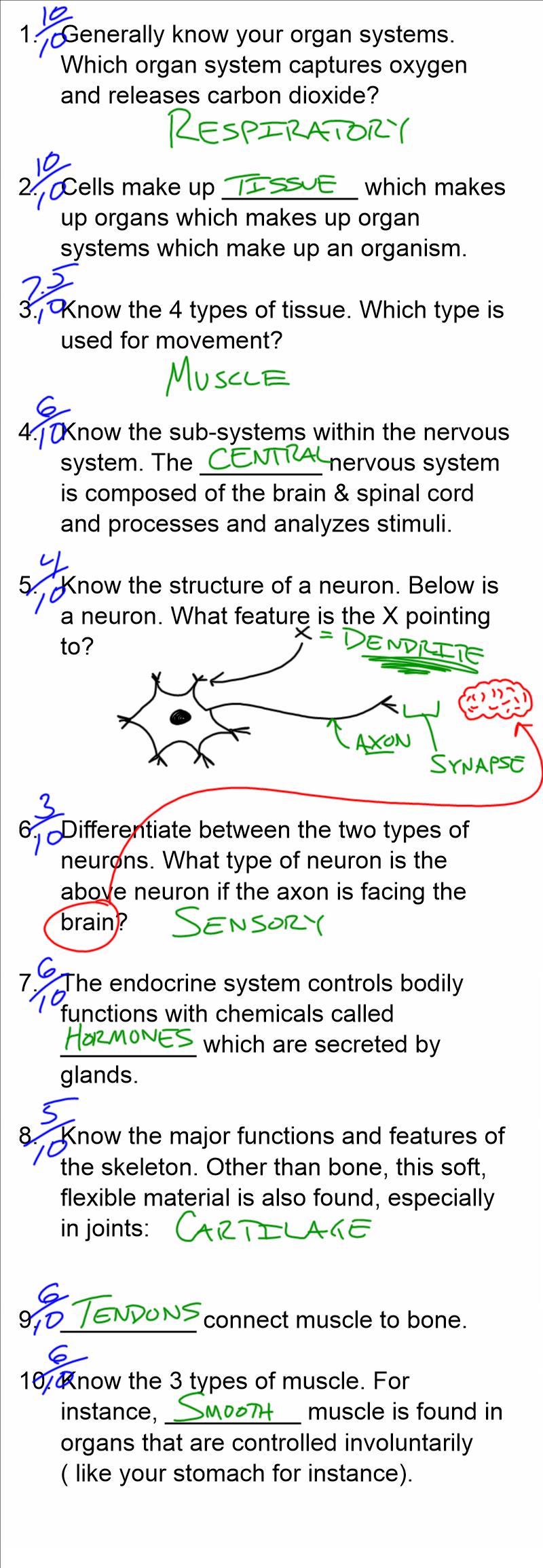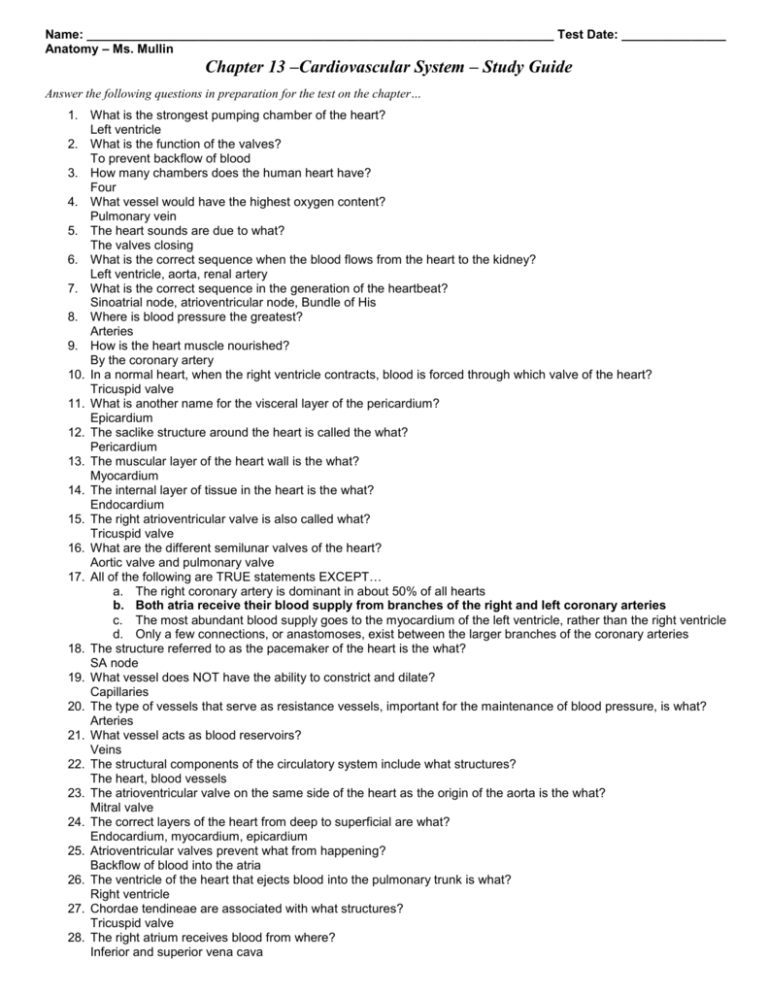Chapter 18 Anatomy And Physiology Quizlet
Chapter 18 Anatomy And Physiology Quizlet - Web anatomy and physiology chapter 18. After studying this chapter, you will be able to: The pericardial cavity lies between the parietal and visceral layers of the serous pericardium. To defend the body against infection and other threats;. Web abundant, agranular, especially effective against cancer cells. Rare, agranular, releases antimicrobial defensins. Web 18.1 an overview of blood blood is a fluid connective tissue critical to the transportation of nutrients, gases, and wastes throughout the body; Parietal layer of serous pericardium. We’ve provided hundreds of anatomy and physiology questions for you to prepare for your next anatomy and physiology quiz or test. Identify the organs of the urinary system.
(b) a single erythrocyte can contain 300 million. The heart is one of the body’s most dynamic and resilient organs. Web anatomy and physiology chapter 18: Web ch 18 quizlet flashcards. Click the card to flip 👆. We’ve provided hundreds of anatomy and physiology questions for you to prepare for your next anatomy and physiology quiz or test. Identify the primary functions of blood, its fluid and cellular components, and its physical characteristics. Web anatomy and physiology chapter 18. To defend the body against infection and other threats;. Chapter 18 anatomy and physiology flashcards | quizlet study with quizlet and memorize flashcards containing terms like circulatory system, cardiovascular system, hematology and more.
Name the three major functions of the urinary system. Abundant, granular, especially effective against bacteria. Web ch 18 quizlet flashcards. 18 organizing principles of cardiac physiology 18… Rare, granular, contains multiple granules. Between 2nd rib and 5th intercostal space. Web anatomy and physiology chapter 18: Identify the primary functions of blood, its fluid and cellular components, and its physical characteristics. After studying this chapter, you will be able to: The heart is one of the body’s most dynamic and resilient organs.
31 Label The Heart Quizlet Labels 2021
Web study with quizlet and memorize flashcards containing terms like the process of breakinf food down physically and chemically for absorption and use by the body is a. Rare, agranular, releases antimicrobial defensins. Rare, granular, contains multiple granules. Vascular spasm, the formation of a platelet plug, and coagulation, in which clotting factors promote the. Alveolar process the term orbicular means.
Anatomy Quizlet Chapter 2 Anatomical Charts & Posters
18 organizing principles of cardiac physiology 18… Anatomy and chemistry basics what is anatomy and physiology… After studying this chapter, you will be able to: Rare, granular, contains multiple granules. Web use these quizzes to test yourself on how well you know anatomy and physiology.
Chapter 6 Anatomy And Physiology Answers
(b) a single erythrocyte can contain 300 million. Hemostasis involves three basic steps: Pericardial cavity (containing a film of serous fluid) 4. Web prevent the heart from filling properly with blood. Web © 2023 quizlet, inc.
Chapter 4 Diagram 3 of 5 (Openstax Anatomy & Physiology) Diagram Quizlet
To defend the body against infection and other threats;. Between 2nd rib and 5th intercostal space. Web anatomy and physiology chapter 18. Web abundant, agranular, especially effective against cancer cells. Web use these quizzes to test yourself on how well you know anatomy and physiology.
Quizlet For Anatomy And Physiology
Name the three major functions of the urinary system. The heart quiz questions human. Web hemostasis is the physiological process by which bleeding ceases. To defend the body against infection and other threats;. Identify the organs of the urinary system.
Anatomy Quizlet Chapter 2 Anatomical Charts & Posters
Between 2nd rib and 5th intercostal space. 73 cards biology human anatomy & physiology practice all cards the portion of the jaw that surrounds and supports the tooth is the ___. Alveolar process the term orbicular means circular. After studying this chapter, you will be able to: Web study with quizlet and memorize flashcards containing terms like the process of.
Study For Anatomy Anatomical Charts & Posters
Web anatomy and physiology chapter 18: We’ve provided hundreds of anatomy and physiology questions for you to prepare for your next anatomy and physiology quiz or test. Blood vessels and circulation ; Rare, granular, contains multiple granules. Identify the organs of the urinary system.
Physiology And Anatomy Quizlet
Web chapter 18 study guide: Web study with quizlet and memorize flashcards containing terms like the process of breakinf food down physically and chemically for absorption and use by the body is a. Identify the organs of the urinary system. Web anatomy and physiology chapter 18. Web anatomy & physiology 2.
Anatomy And Physiology Chapter 7 Quizlet Anatomy Book
Web prevent the heart from filling properly with blood. Vascular spasm, the formation of a platelet plug, and coagulation, in which clotting factors promote the. To defend the body against infection and other threats;. Chapter 18 anatomy and physiology flashcards | quizlet study with quizlet and memorize flashcards containing terms like circulatory system, cardiovascular system, hematology and more. Rare, agranular,.
Chapter 18 Anatomy of the Cardiovascular System Test
The heart is one of the body’s most dynamic and resilient organs. Between 2nd rib and 5th intercostal space. We’ve provided hundreds of anatomy and physiology questions for you to prepare for your next anatomy and physiology quiz or test. Web abundant, agranular, especially effective against cancer cells. Web 18.1 an overview of blood blood is a fluid connective tissue.
Name The Three Major Functions Of The Urinary System.
Blood vessels and circulation ; Rare, granular, contains multiple granules. Web anatomy and physiology chapter 18: Parietal layer of serous pericardium.
Link A B, Of Width B=50 Mm And Thickness T=6 Mm, Is Used To Support The End Of A Horizontal Beam.
Web 18.1 an overview of blood blood is a fluid connective tissue critical to the transportation of nutrients, gases, and wastes throughout the body; The heart quiz questions human. Web study with quizlet and memorize flashcards containing terms like the process of breakinf food down physically and chemically for absorption and use by the body is a. How does the position of the kidneys differ from that of most other.
After Studying This Chapter, You Will Be Able To:
Chapter 18 anatomy and physiology flashcards | quizlet study with quizlet and memorize flashcards containing terms like circulatory system, cardiovascular system, hematology and more. Pericardial cavity (containing a film of serous fluid) 4. Epicardium (visceral layer of serous pericardium can be infiltrated with fat) 5. 73 cards biology human anatomy & physiology practice all cards the portion of the jaw that surrounds and supports the tooth is the ___.
Abundant, Granular, Especially Effective Against Bacteria.
Web anatomy & physiology 2. The pericardial cavity lies between the parietal and visceral layers of the serous pericardium. Web use these quizzes to test yourself on how well you know anatomy and physiology. The heart is one of the body’s most dynamic and resilient organs.







